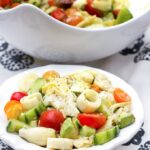If you enjoy bold flavors, you’ll love exploring Thai cuisine. Thai dishes are known for combining sweet, sour, salty, and spicy elements in a perfect balance.
Discover how you can bring these vibrant and delicious flavors into your own kitchen with these 15 Thai recipes. Whether you’re a beginner or an experienced cook, these recipes will guide you through creating satisfying and authentic Thai meals.
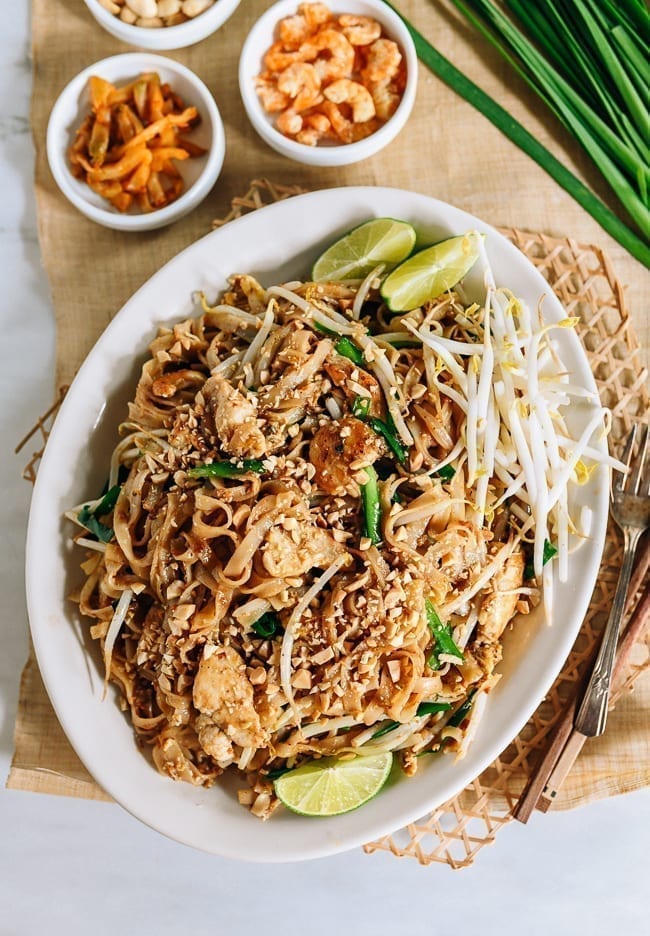
1) Pad Thai
Pad Thai is a popular Thai dish that balances tangy, sweet, and savory flavors. It typically includes rice noodles, a choice of protein, eggs, and a variety of vegetables.
To make the sauce, blend fish sauce, soy sauce, tamarind paste, brown sugar, and a bit of Sriracha. This mix gives Pad Thai its unique taste.
For the protein, you can use chicken, shrimp, or tofu. Cook it in a large pan with garlic and bell peppers until it’s nicely done.
Prepare the rice noodles by soaking them in room-temperature water. Once they are soft, drain them and set them aside.
Heat a bit of oil in the pan, then add the cooked protein and garlic. Next, stir in the prepared sauce and noodles. Cook everything together until well-mixed and heated through.
Serve the Pad Thai hot, garnished with crushed peanuts, lime wedges, and fresh cilantro for extra flavor. Enjoy this delightful dish!
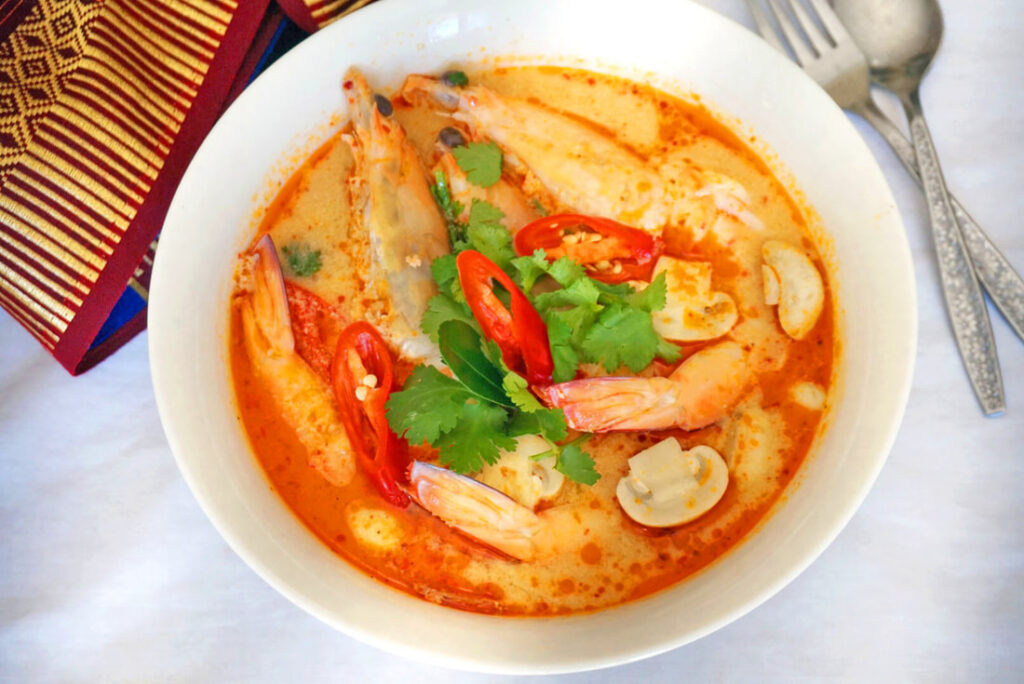
2) Tom Yum Goong
Tom Yum Goong is a classic Thai soup known for its hot and sour flavors. You will love the mix of spices, shrimp, and fragrant herbs.
Start by adding lemongrass, galangal, and kaffir lime leaves to a pot of boiling water. Simmer for a few minutes to release their aromas.
Next, add mushrooms and cook briefly. Then, add shrimp to the pot. Cook until the shrimp turn pink and are just done. If you prefer, you can use frozen shrimp for convenience.
Adjust the seasoning with fish sauce, lime juice, and some Thai chilies for heat. This balance of salty, sour, and spicy flavors is what makes Tom Yum Goong special.
Serve it hot, usually with jasmine rice on the side. Enjoy each spoonful of this refreshing and aromatic soup. It’s not just delicious but also very comforting.
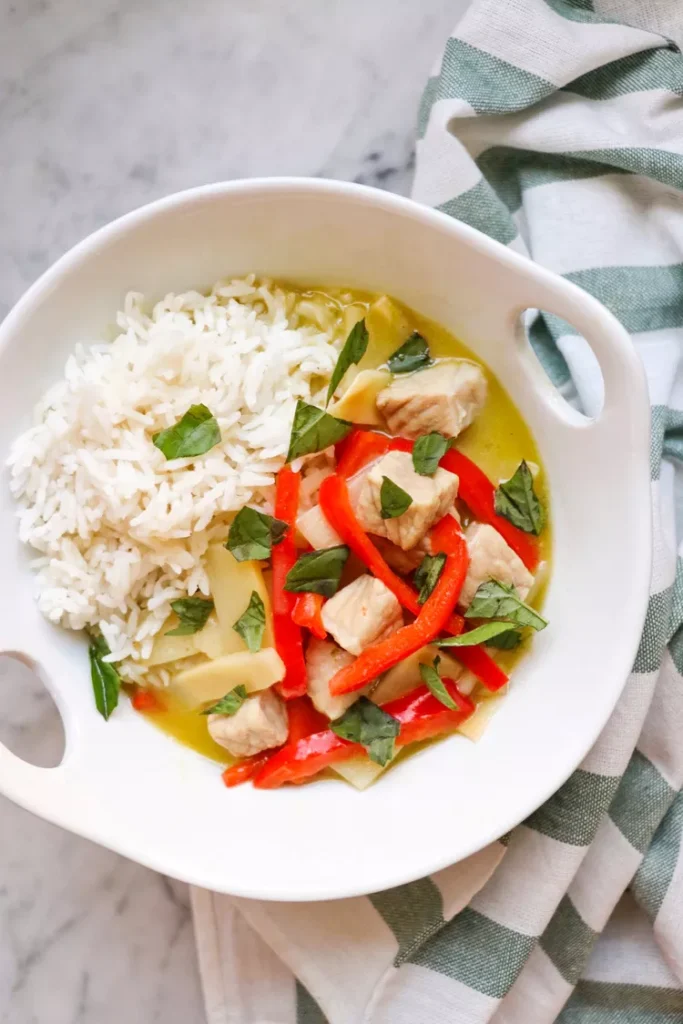
3) Thai Green Curry
Thai Green Curry is a flavorful and aromatic dish. The key to this curry is the green curry paste, which you can make at home or buy from a store. It’s made with ingredients like cilantro, lemongrass, garlic, and chilies, which give it a distinct and vibrant flavor.
You can use different types of protein in your curry. Chicken is common, but prawns, fish, beef, or pork also work well. If you use prawns or fish, add them towards the end and cook for about 3 to 5 minutes.
Vegetables add texture and nutrients to the curry. Popular choices include broccoli, cauliflower, asparagus, carrots, and mushrooms. You should cook these until they are soft but not mushy. Bamboo shoots, red bell peppers, and Thai basil are also great additions.
Coconut milk is essential for a creamy and rich sauce. You can blend it with fresh basil leaves to enhance the green color and flavor. Simmer the sauce until everything is well-cooked and the flavors meld together.
Season your curry with fish sauce and palm sugar to balance the heat and sweetness. Serve it hot with jasmine rice or noodles for a complete meal. Enjoy the taste of Thailand right in your kitchen!
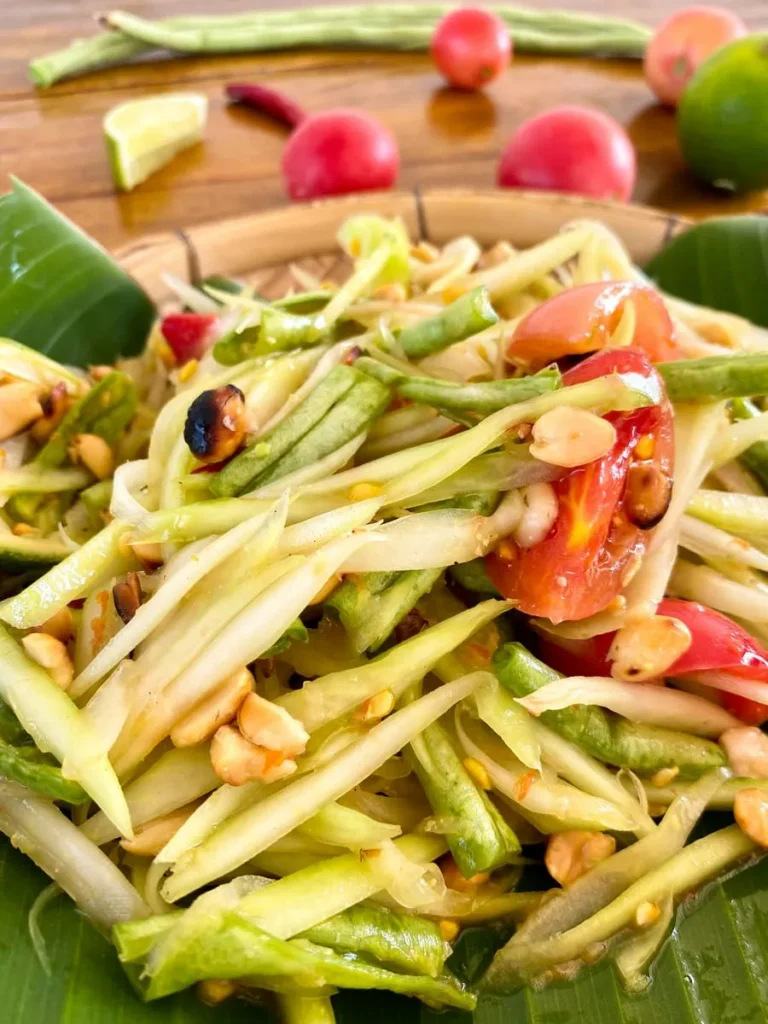
4) Som Tum
Som Tum, also called Green Papaya Salad, is a staple in Thai cuisine. It’s fresh, spicy, and delicious. Made mainly with shredded green papaya, it has a unique crunch and flavor.
To prepare Som Tum, start with julienned green papaya. Soaking it in ice water helps keep it crisp. For the dressing, pound garlic, Thai chilies, and palm sugar together.
You will add lime juice and fish sauce to the mixture, giving the salad its signature tangy and savory taste. Long beans, tomatoes, and dried shrimp enhance the texture and flavors.
Mix the dressing and the papaya shreds. Lightly pound or stir the mix to blend everything well. This salad is best served immediately, so all the fresh ingredients retain their vibrant tastes and bright colors.
Enjoy this classic Thai salad with grilled meats, seafood, or as a refreshing appetizer.
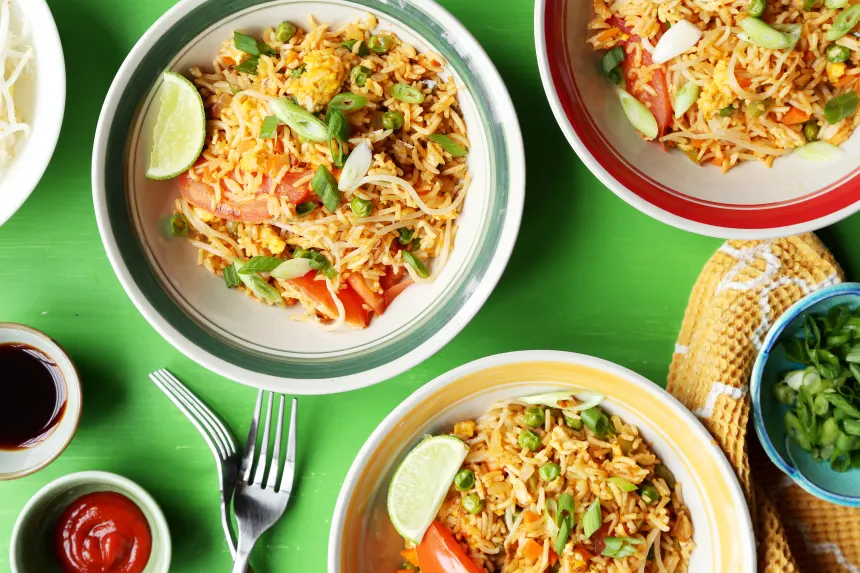
5) Khao Pad
Khao Pad, or Thai fried rice, is a delicious and simple dish you can make at home. It uses cooked rice, which is stir-fried with garlic, shallots, and oil. This dish often includes proteins like shrimp, chicken, or tofu.
To start, heat oil in a wok or large pan. Add minced garlic and thinly sliced shallots. Stir until fragrant. Next, add your choice of protein. Cook until done, then push everything to one side of the pan.
In the empty side, crack in the eggs. Scramble them until they are just set. Then, mix everything together with the rice. Add fish sauce and thin soy sauce for seasoning. You can also add vegetables like peas, carrots, and bell peppers.
Continue to stir-fry until everything is well-mixed and heated through. You may want to garnish with green onions, cilantro, or a dash of white pepper. Serve the Khao Pad hot, with lime wedges and cucumber slices on the side.
Enjoy the rich and savory flavors of this Thai classic!
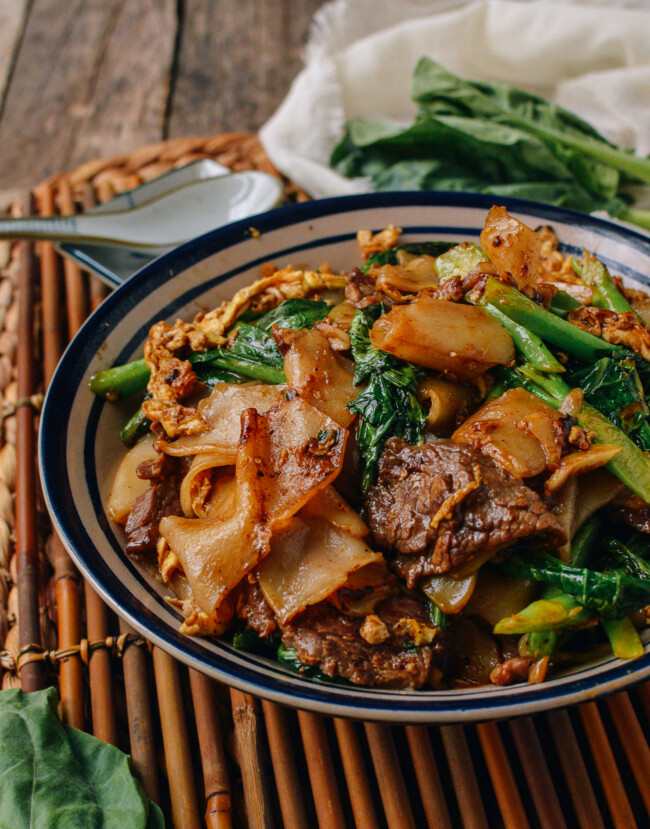
6) Pad See Ew
Pad See Ew is a popular Thai stir-fried noodle dish. It features wide rice noodles, flavorful sauces, and fresh vegetables.
When making Pad See Ew, it’s important to use Thai sweet soy sauce. This ingredient gives the dish its distinct taste. You should also let the noodles caramelize for a few seconds in the pan to enhance the flavor.
The noodles are usually stir-fried with broccoli, eggs, and meat. Beef, chicken, or pork are common choices. Start by cooking the meat and setting it aside, then cook the eggs and vegetables before adding the noodles and sauce.
Cook the dish in batches if you’re making a large amount. This ensures that everything cooks evenly. Under-cook the dried noodles slightly to prevent them from becoming too soft.
With these steps, you can enjoy a delicious, authentic Pad See Ew at home.
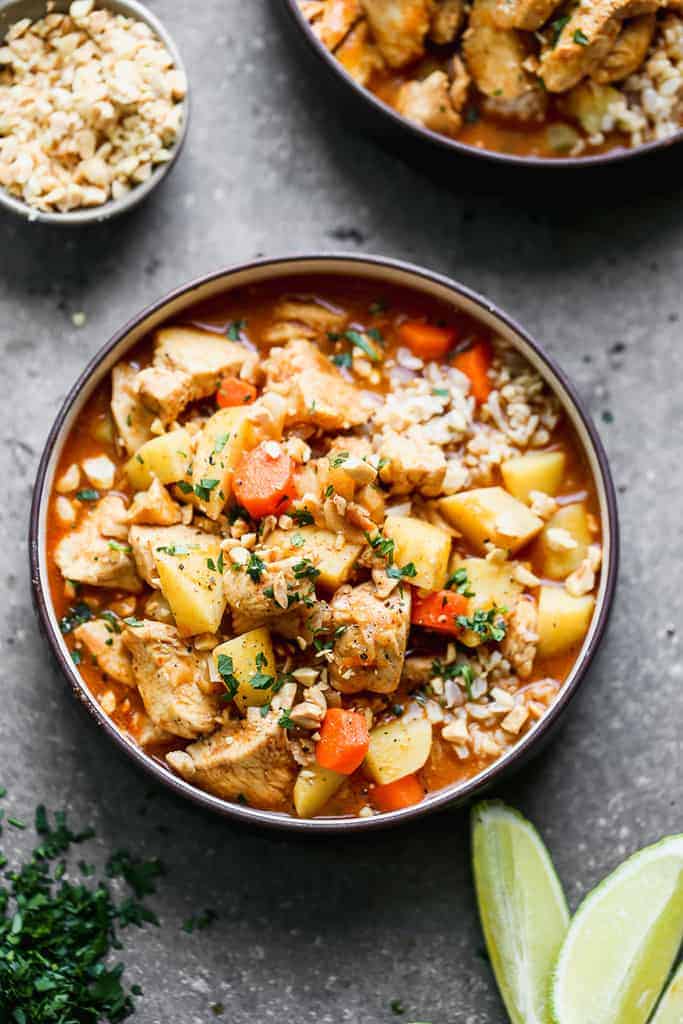
7) Massaman Curry
Massaman Curry is a rich, flavorful Thai dish. You start this recipe by heating some cooking oil in a large pot. Add the Massaman curry paste and cook it until it is aromatic.
Next, put in your chicken pieces and cook them for a few minutes. Make sure the chicken is evenly coated with the curry paste.
Then, pour in the coconut milk and mix well. Allow it to simmer gently on medium heat. This helps the flavors blend together.
Add vegetables like onions, carrots, and potatoes. Stir these in and let the curry cook until the vegetables are tender.
You will also need to add fish sauce, palm sugar, and tamarind paste. These give the curry its sweet, salty, and tangy flavors. Adjust these seasonings to suit your taste.
It’s important to stir the curry occasionally. This ensures even cooking and prevents sticking. Cook until the chicken and vegetables are thoroughly done.
Serve the Massaman Curry hot with steamed rice. The creamy and spicy taste makes it a favorite among many. Enjoy your delightful homemade Thai dish!
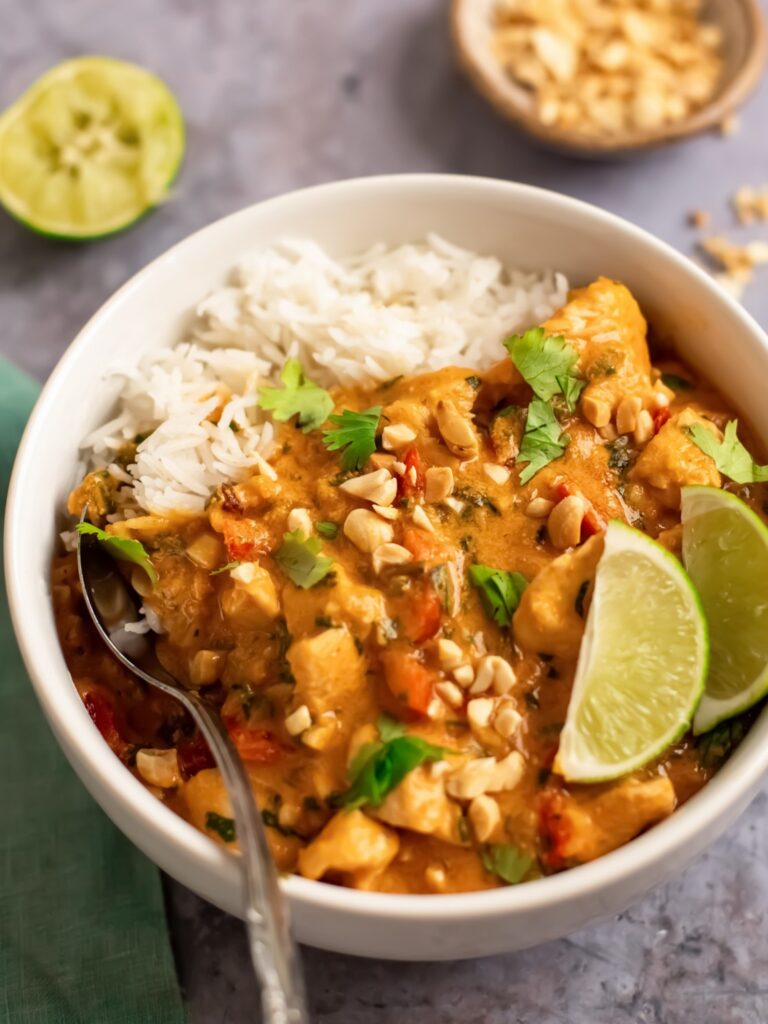
8) Panang Curry
Panang Curry is a rich and flavorful Thai dish. It combines ingredients like coconut milk, curry paste, and various meats. It’s thicker and less spicy than some other Thai curries.
To start, heat some oil in a pan over medium-high heat. Cook onions for a couple of minutes. Add bell peppers, garlic, and ginger, and sauté for a few more minutes.
Next, add the Panang curry paste and peanut butter. Stir and cook for a minute. Pour in coconut milk. Whisk cornstarch with a bit of coconut milk and add it to the pan.
For a boost of flavor, mix in some fish sauce, sugar, and kaffir lime leaves. Let the curry simmer.
If you like, add chicken, pork, or tofu. Make sure the meat or tofu is thoroughly cooked. Serve your Panang Curry over steamed rice or rice noodles. Top it with fresh basil or cilantro for extra freshness. Enjoy!
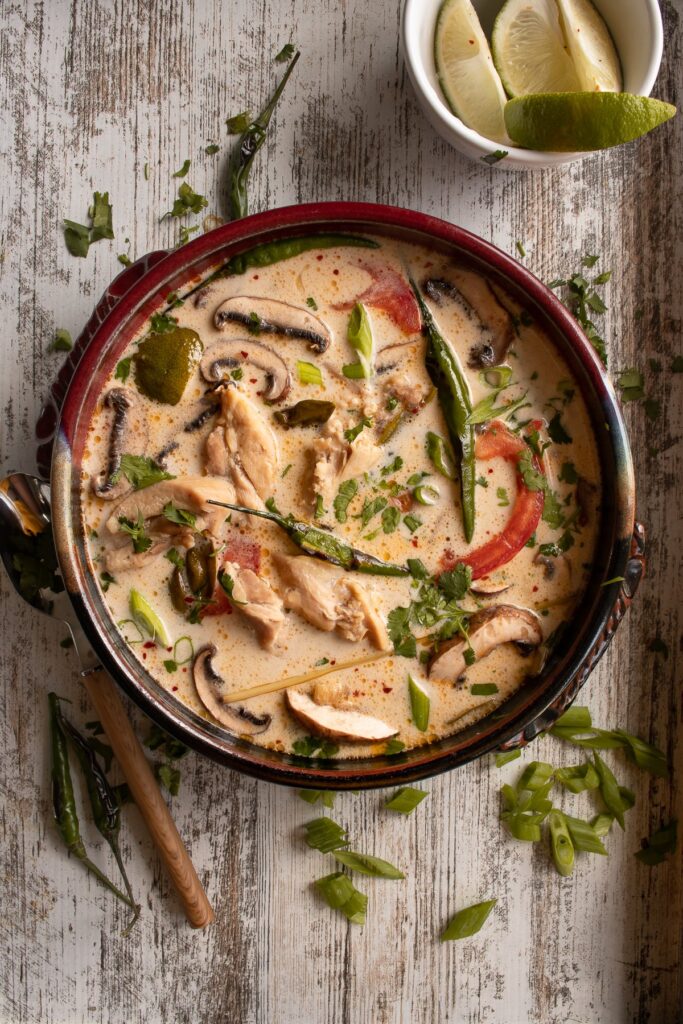
9) Tom Kha Gai
Tom Kha Gai is a popular Thai soup known for its rich and creamy flavor. It features coconut milk as a key ingredient, making it both soothing and aromatic. Traditionally, this soup includes chicken, but you can also use tofu for a vegetarian option.
To make Tom Kha Gai, start by heating chicken stock and coconut milk in a pot. Add lemongrass, kaffir lime leaves, and galangal slices to infuse the soup with their distinct flavors. These herbs are essential for creating the authentic taste.
Next, add thinly sliced chicken pieces and simmer until fully cooked. Mushrooms, like oyster mushrooms, are commonly added for extra texture. You’ll also add fish sauce and sugar to balance the flavors.
Chilies can be included for those who enjoy a bit of heat. Finally, add lime juice to brighten the soup right before serving. Adjust the seasoning with more fish sauce or lime juice as needed. Enjoy your Tom Kha Gai with fresh cilantro and a side of steamed rice for a complete meal.
This flavorful soup is perfect for any time of the year and brings the tastes of Thailand straight to your kitchen.
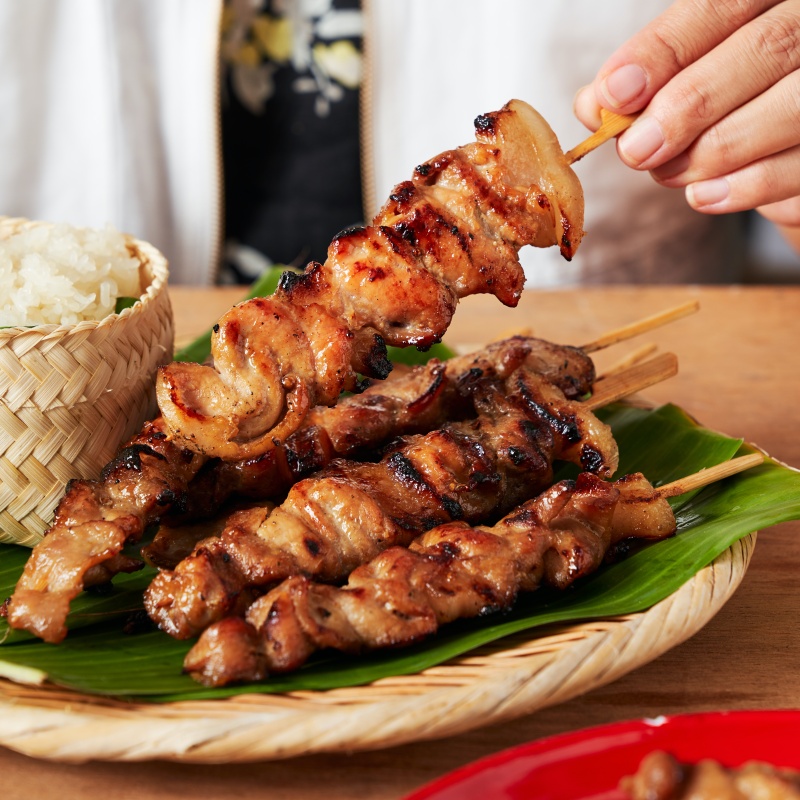
10) Moo Ping
Moo Ping, also known as Thai grilled pork skewers, is a popular street food in Thailand. You can often find it sizzling over hot coals at roadside stalls.
To make Moo Ping, start by marinating thinly sliced pork in a mix of garlic, cilantro roots, palm sugar, fish sauce, soy sauce, and white pepper. This blend gives the pork its signature sweet and savory flavor.
Once marinated, skewer the pork pieces and let them sit in the refrigerator for a few hours. This step helps the flavors to deepen and the skewers to hold their shape better when cooking.
Grill the skewers over medium to medium-high heat. It only takes a few minutes on each side until they are perfectly cooked and slightly charred.
Moo Ping is often enjoyed with sticky rice and a spicy dipping sauce. It makes a deliciously simple yet flavorful dish that you can easily prepare at home.
Whether you’re having a barbecue or just want a taste of Thai street food, Moo Ping is a fantastic recipe to try.
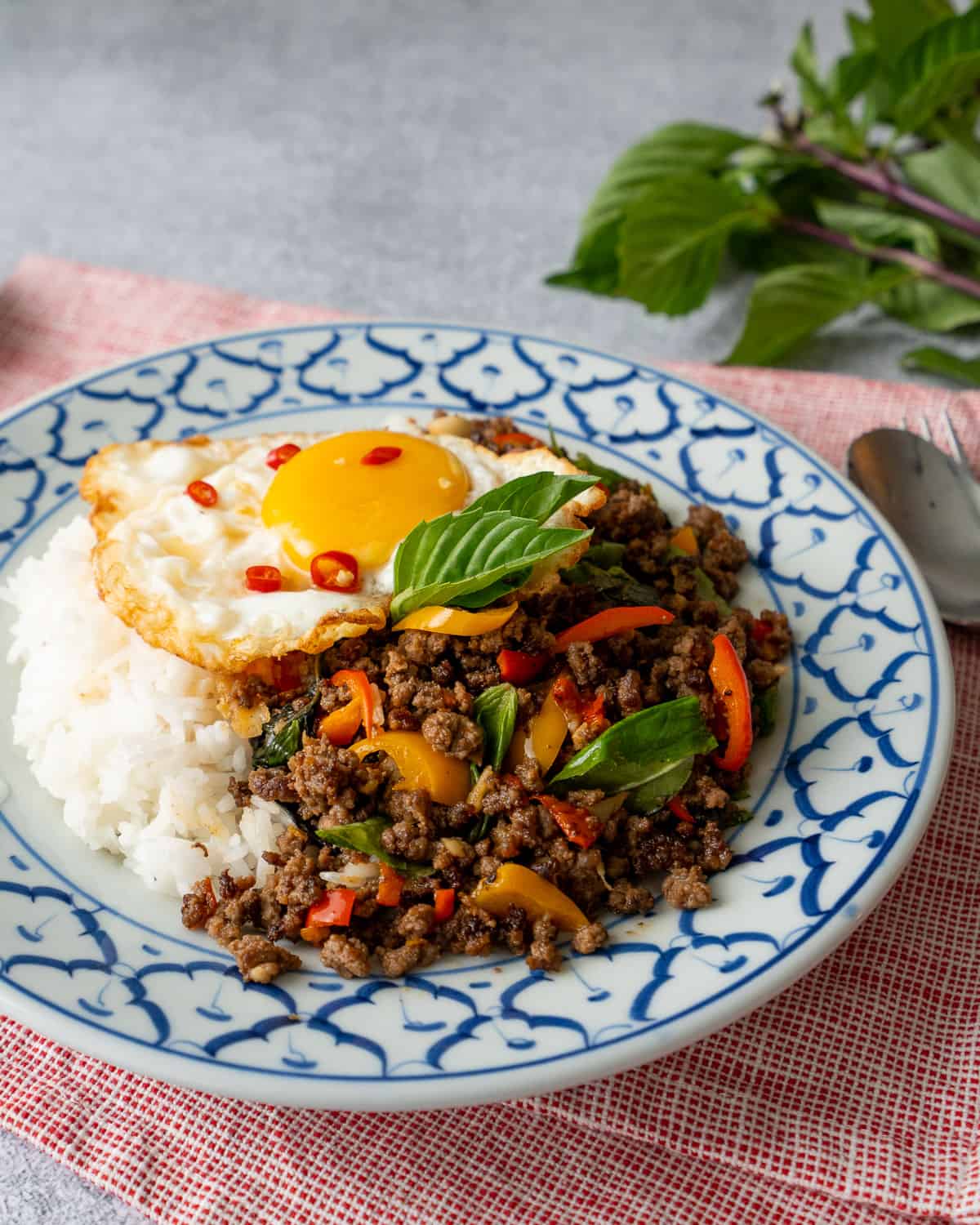
11) Pad Kra Pao
Pad Kra Pao is a popular and flavorful Thai dish. It’s known for its spicy, aromatic flavors and the use of holy basil. You can make this dish quickly and easily, making it great for a weeknight dinner.
Start by pounding Thai chilies and garlic in a mortar and pestle to form a paste. This adds a distinct, spicy heat to your stir-fry. Use fresh holy basil leaves, which give the dish its signature taste.
Heat some oil in a wok or skillet. Add the chili-garlic paste and cook until it becomes fragrant. Then, add your choice of protein, such as chicken, pork, or beef, breaking it up into small pieces.
Season with fish sauce, soy sauce, and a bit of sugar. Toss everything well to coat the protein evenly with the sauce. Finally, add the holy basil leaves and cook for just a few seconds until they wilt.
Serve your Pad Kra Pao with steamed jasmine rice. A fried egg on top is a common and tasty addition. Enjoy the balance of spicy, salty, and slightly sweet flavors in every bite.
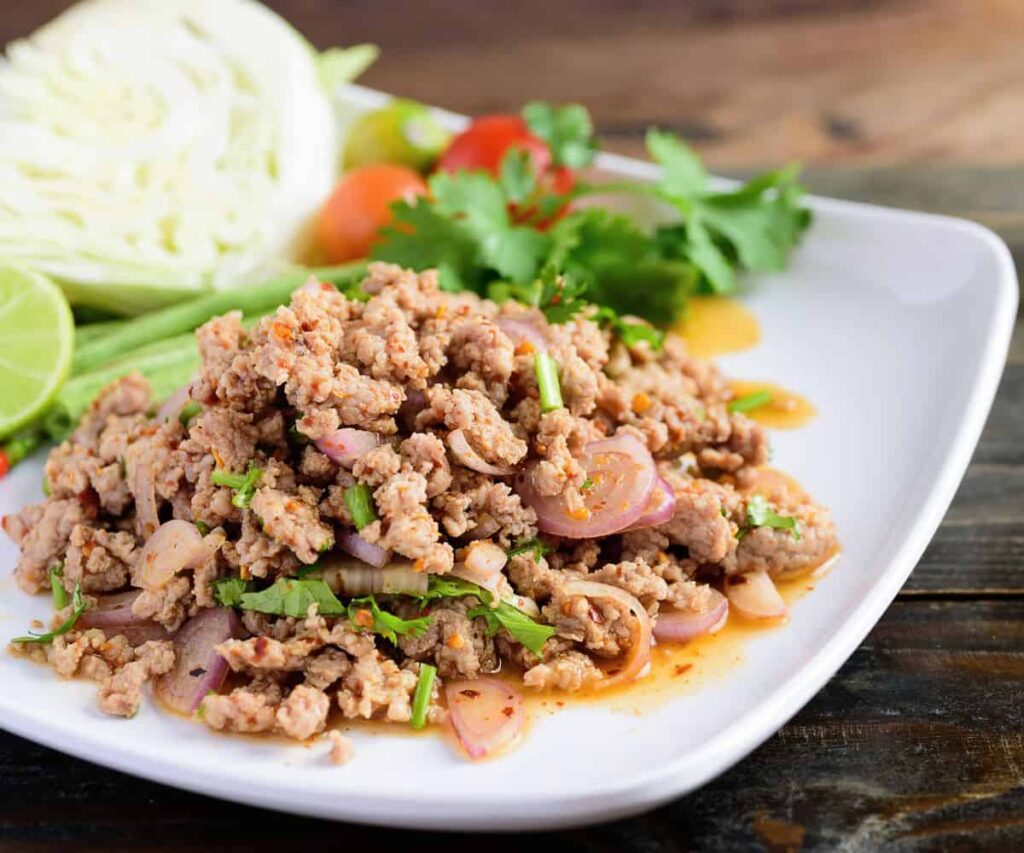
12) Laab
Laab, sometimes spelled Larb, is a traditional Thai salad known for its fresh and zesty flavors. This dish often includes ground meat, such as chicken or pork, mixed with aromatic herbs, lime juice, fish sauce, and chili flakes.
To make Laab, start by cooking your chosen meat in a skillet without any oil. Keep the meat juices in the pan to maintain the dish’s moisture. Once the meat is cooked, add thinly sliced shallots, green onions, and fresh mint leaves.
A unique ingredient in Laab is toasted rice powder. You can make it by toasting uncooked rice with kaffir lime leaves until it turns golden brown. Then grind it into a fine powder using a mortar and pestle.
After adding the herbs, mix in the fish sauce, lime juice, and toasted rice powder. These ingredients provide a balance of salty, sour, and nutty flavors. You can adjust the spice level by adding more or fewer chili flakes according to your taste.
Laab is best enjoyed with fresh vegetables like lettuce or cucumber. It can be served warm or at room temperature, making it a versatile dish for any occasion. Enjoy your homemade Laab as a fresh and flavorful Thai delicacy.
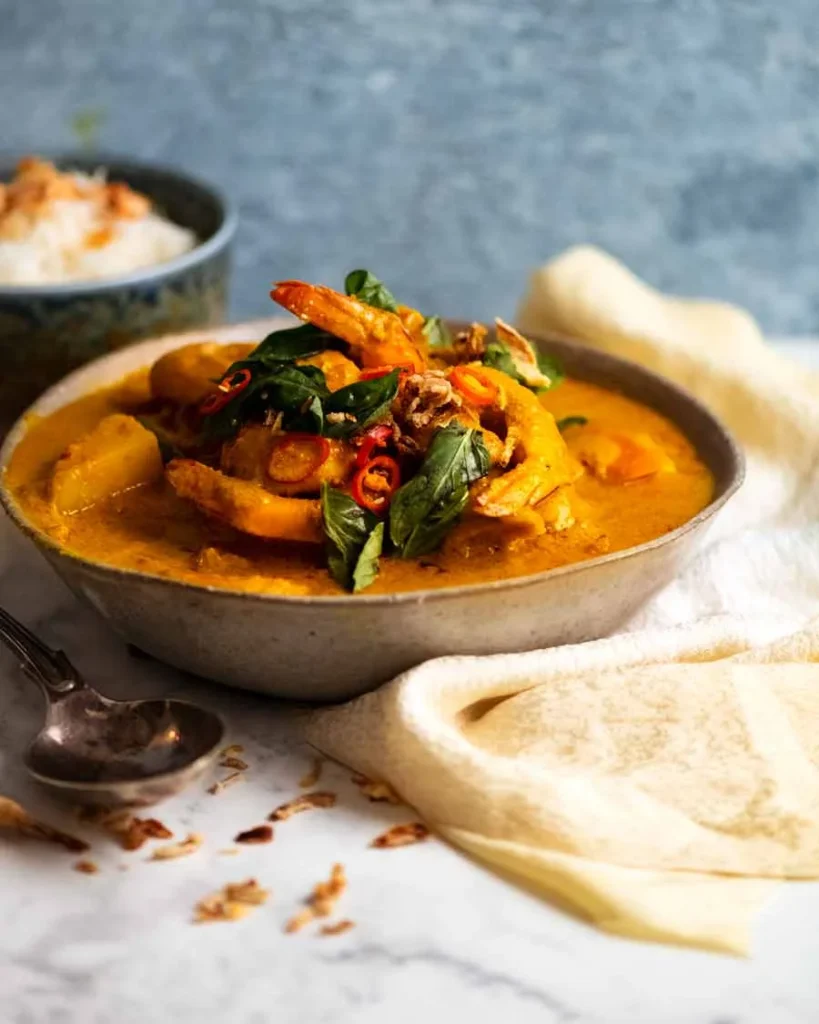
13) Yellow Curry
Yellow curry is a delicious Thai dish that combines rich flavors with a hint of spice. It’s known for its vibrant color and creamy texture.
You will need yellow curry paste, which you can make at home or buy at the store. The paste includes ingredients like lemongrass, turmeric, garlic, and chillies.
Start by cooking some thinly sliced chicken in a skillet with oil until it’s no longer pink. Add sliced onions, carrots, and potatoes. These vegetables add sweetness and texture to the curry.
Pour in coconut milk and chicken stock. This gives the curry its creamy consistency. Let it simmer until the vegetables are tender and the chicken is fully cooked.
Season with salt, palm sugar, and fish sauce to balance the flavors. Adjust the seasoning as needed to suit your taste.
Serve your yellow curry over steamed rice. It pairs well with jasmine rice, which absorbs the savory sauce perfectly. This dish is great for a cozy dinner and can easily be adjusted to be more or less spicy.
Enjoy your flavorful yellow curry!
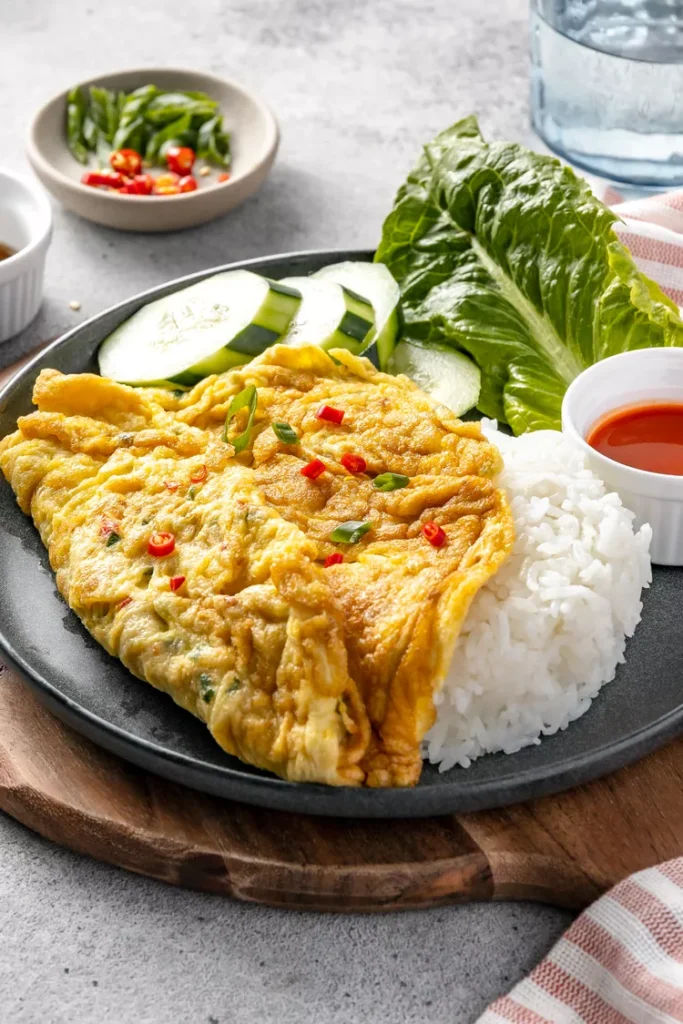
14) Kai Jeow
Kai Jeow is a classic Thai omelette that’s quick and easy to make. It’s a popular comfort food in Thailand, often enjoyed with a bowl of rice. You can whip it up in less than 15 minutes.
To start, crack two eggs into a bowl. Add a teaspoon of fish sauce for each egg. Beat the eggs until they are frothy and fully combined.
Heat about ¼ cup of vegetable oil in a frying pan over medium-high heat. Make sure the oil is very hot, almost smoking. This will help the omelette become crispy on the edges.
Pour the egg mixture into the hot oil. Let it cook undisturbed for a minute or until the edges are golden brown. Then, flip the omelette and cook the other side for another minute.
You can add chopped green onions, scallions, or even Thai chilies to the eggs before cooking if you like extra flavor. Some recipes also call for a bit of brown sugar to balance the savory taste.
Serve your Kai Jeow hot, with a side of rice and maybe some fresh veggies. It’s a simple yet delicious meal that brings the taste of Thai street food to your home.
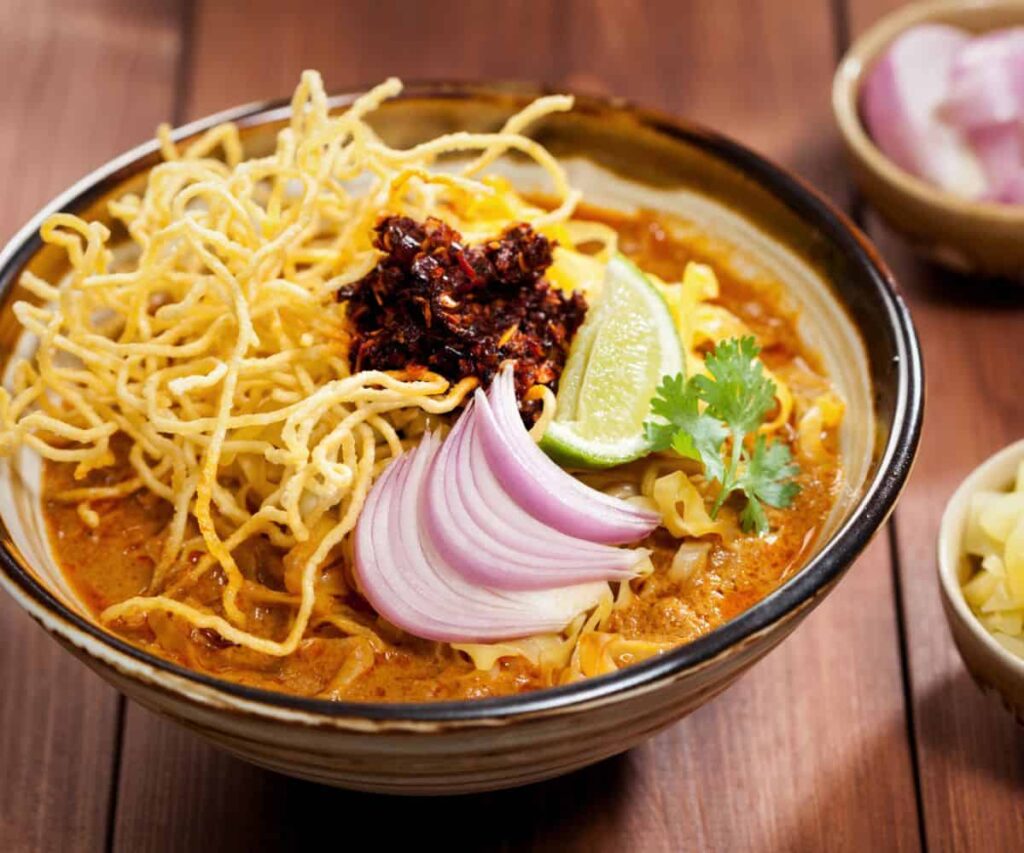
15) Khao Soi
Khao Soi is a traditional Northern Thai curry noodle soup. It is known for its rich and creamy coconut milk broth, mingling with spices like turmeric and curry powder.
To start, you’ll need shallots, garlic, and lemongrass. Saute these ingredients in oil until they turn golden. This step brings out their flavors.
Next, add red curry paste, turmeric, curry powder, and cardamom. Stir them for a minute to mix the spices well. Introduce coconut milk and chicken broth, and simmer.
For protein, chicken is commonly used. You can brown the chicken pieces in a pot first. Set them aside, then fry the curry paste in the same pot until fragrant.
Once the paste is ready, add the browned chicken back, along with coconut milk and chicken broth. Let it simmer until the chicken is fully cooked and tender.
Serve Khao Soi with boiled egg noodles. Garnish with crispy noodles on top, which add a delightful crunch. Add lime wedges and pickled mustard greens on the side for extra flavor.
Enjoy the blend of creamy, spicy, and tangy notes of Khao Soi. It’s a comforting and flavorful dish perfect for any meal.
Health Benefits Of Thai Cuisine
Thai cuisine offers a variety of health benefits, combining nutritional richness with the wholesome properties of traditional herbs and spices. Each dish can provide you with essential vitamins, minerals, and antioxidants.
Nutritional Value
Thai food is often packed with nutrient-dense ingredients. Many dishes use lean proteins like chicken, shrimp, and tofu. These proteins are crucial for maintaining muscle mass and overall health. Vegetables, such as bell peppers, broccoli, and snap peas, supply a range of vitamins and minerals, including vitamin C, vitamin A, and potassium.
Whole grains, such as brown rice and rice noodles, are sometimes used, offering fiber that aids digestion and helps maintain a healthy weight. Signature dishes like Pad Thai often include bean sprouts and peanuts, which provide additional sources of essential nutrients and healthy fats.
Herbs And Spices Insights
Herbs and spices are key in Thai cooking, not just for their flavor but their health benefits. Lemongrass and galangal (similar to ginger) have anti-inflammatory properties and may help with digestion. Turmeric, frequently used in curries, contains curcumin, known for its antioxidant and anti-inflammatory effects.
Chilies are rich in capsaicin, which can boost metabolism and relieve pain. Garlic and basil contribute antimicrobial and immune-boosting properties. Coriander (cilantro) is high in vitamins A and K and offers a refreshing flavor that enhances many dishes.
By incorporating these elements into your meals, you’re not only making them tastier but also adding a range of health benefits that can improve your well-being.
Essential Ingredients In Thai Cooking
To make delicious Thai dishes, you need to use certain ingredients that bring out the unique flavors of Thai cuisine. These include key sauces, pastes, and various vegetables and fruits.
Key Sauces And Pastes
Fish Sauce: Fish sauce is a staple in Thai cooking. It adds a salty, savory depth to many dishes. You can use it in soups, stir-fries, and marinades.
Oyster Sauce: This thick, dark sauce provides a sweet, earthy flavor. It’s especially good in stir-fried dishes.
Soy Sauce: Soy sauce comes in light and dark varieties. Light soy sauce is saltier and used commonly for seasoning. Dark soy sauce is thicker and gives color to dishes.
Curry Pastes: Thai cuisine uses different curry pastes like red, green, and yellow. These pastes are made from a blend of spices, herbs, and chilies. Each type gives a distinct flavor to curries and stews.
Unique Vegetables And Fruits
Thai Basil: Thai basil has a strong, peppery flavor with hints of anise. It’s used in many stir-fries and soups.
Kaffir Lime Leaves: These leaves give a citrusy, floral aroma to curries and soups. If you can’t find them, lime zest is a good substitute.
Galangal: Often confused with ginger, galangal has a sharper, more citrusy taste. It’s commonly used in soups like Tom Yum.
Palm Sugar: This sweetener is made from the sap of coconut palms. It has a rich, caramel-like flavor and is used in sauces and desserts.
Lemongrass: Lemongrass adds a fresh, lemony aroma to dishes. It’s often used in soups and curries.
Having these ingredients on hand will help you recreate authentic Thai flavors at home.





